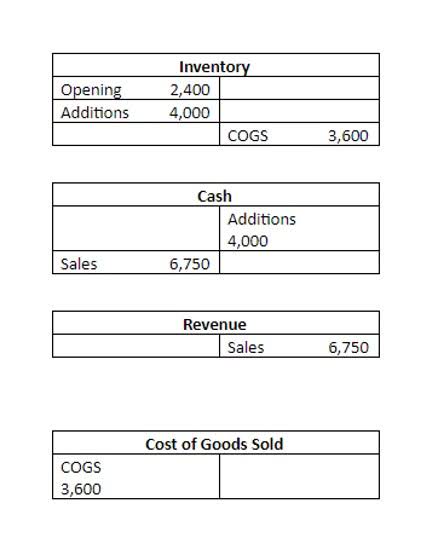
As we mentioned before, nonprofit accounting focuses on the accountability aspect of finances. Your nonprofit’s donors have the right to set restrictions on the donations they contribute to your organization and grant funders want to make sure their funds are spent on the agreed-upon programs. These restrictions mean that you have to ensure their funds are spent in a way that the supporters approve of. Another way in which for-profit and nonprofit accounting differs, as you might have already guessed from our discussion above, is in their financial statements. With a for-profit business, the accounting system is ultimately tracking net income for the company and thus they can develop a balance sheet that outlines a company’s assets, liabilities, and owners’ equity. And this statement can be distributed to shareholders to show retained earnings.
The Best Accounting Software for Nonprofit Organizations – Top 10 Reviewed for 2024 – Techopedia
The Best Accounting Software for Nonprofit Organizations – Top 10 Reviewed for 2024.
Posted: Fri, 26 Apr 2024 07:00:00 GMT [source]
Fund Accounting vs. Single Accounting System
If a donor does not restrict the donations they provide, that money can be added to your organization’s annual fund and used for overhead, programs, or any other expenses. The Form 990 helps the IRS keep track of tax-exempt organizations, ensuring they’re doing what’s intended with the funds they receive and working toward their respective missions. Instead of keeping a balance sheet, nonprofits use a statement of financial position. Similar to the for-profit counterpart, this financial statement shows the assets of the organization. However, instead of listing the assets that can be distributed to shareholders, this report is used to show the assets that can be reinvested in the organization’s mission in the future.
Building Strong Bonds: Using Data to Communicate with Major Donors
Although it’s possible to manually generate financial statements from your ledger or spreadsheet, it takes a ton of accounting knowledge and time to do it right. In most cases, it’s better to let your accounting software or a bookkeeper take care of this step for you. A good budget can act like a roadmap for a nonprofit, determining where and when the organization will deploy its resources, and whether it’s on the right track financially. Your board is responsible for financial oversight, so naturally, they’ll play a role in your nonprofit accounting. Hiring members who can advance your mission and set a strong strategic direction for the organization is important. One final item to note is that accounting software can differ between for-profit and nonprofit businesses.

Financial Metrics to Increase Transparency for Your Nonprofit
- Successful fundraising efforts are crucial to the financial health of a nonprofit and its ability to achieve its mission.
- You want to be able to easily report on budgets in a variety of accurate, clear ways without too much fuss, and know what was approved versus what’s been modified.
- Someone could be looking for a balance sheet and an income statement and not realize they will instead see a statement of financial position and a statement of activities.
- In most cases, you need to record donations when they are pledged instead of when they are received.
- Like any organization that handles cash flow and pays taxes, nonprofits should invest in a professional accounting and finance team.
In the nonprofit sector, revenue management involves tracking and reporting on various sources of income. These sources can include fundraising campaigns, donations, grants, and contributions. It is critical for nonprofits to accurately recognize and record these revenue sources to maintain financial transparency and ensure compliance with Generally Accepted Accounting Principles (GAAP). Nonprofits are tax-exempt and have different state and federal requirements for filing their financial documents than for-profit organizations. The bottom line for nonprofits differs from that of for-profits, focusing on the mission rather than the profit earned. Therefore, nonprofits create a statement of activities in lieu of an income statement.
There is also accounting software made solely for use by nonprofits including Aplos, Blackbaud Financial Edge NXT, and NonProfitPlus. While a for-profit business may have many goals, including social objectives, ultimately they exist to make a profit. Nonprofit organizations exist for a multitude of reasons but all https://www.bookstime.com/ of them have one thing in common, they want to help the greater good by serving society and profit doesn’t really come into play. This means that not-for-profit organizations have a completely different financial structure than for-profit organizations which accounts for quite a few differences in their accounting.

Key Differences Between For-Profit and Nonprofit Accounting
To align with Form 990, you’ll categorize expenses as program, administrative, and fundraising (more on that in the next section). Nonprofits and for-profits commonly operate under the Financial Accounting Standards Board (FASB). These standards are defined under GAAP and have slightly different rules for nonprofits. The most common are cash and accrual methods, both of which have benefits depending on their size and scale.
Who For-Profit vs. Nonprofit Companies Serve
We’ve covered briefly the differences between nonprofit and for-profit accounting practices. However, there is another distinction we need to cover when discussing accounting at nonprofit organizations and that is the difference between accounting and bookkeeping. For example, instead nonprofit accounting of measuring equity, nonprofits record their net assets in a balance sheet. For example, if a donor restricts their donation to ensure it’s only used to fund that organization’s scholarship fund, that money would be added to a restricted fund set aside for the scholarship.
Understanding your donors

As you consider the size of your organization and your team’s skills, time, and resources, you may decide to outsource the accounting function. Nonprofit accounting software makes everything we’ve covered so far a whole lot easier. While no one knows exactly what will happen, your budget is your foundation for making critical financial decisions. Create a regular cadence for budget review with key players on your team to ensure it evolves with your organization and priorities. Maintaining a clear view of your financial health is excellent, but it’s even more valuable when you can use that insight to inform your fundraising strategy. Clean and organized account procedures ensure every donation is accounted for and goes to the best place to make a significant impact.